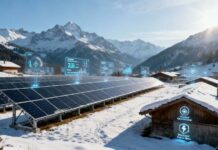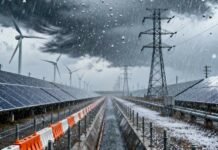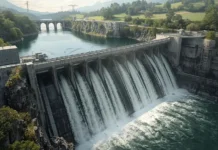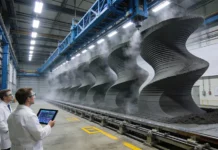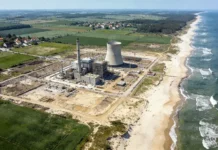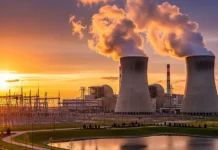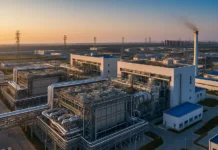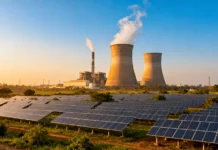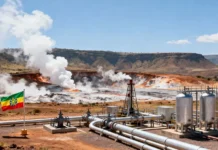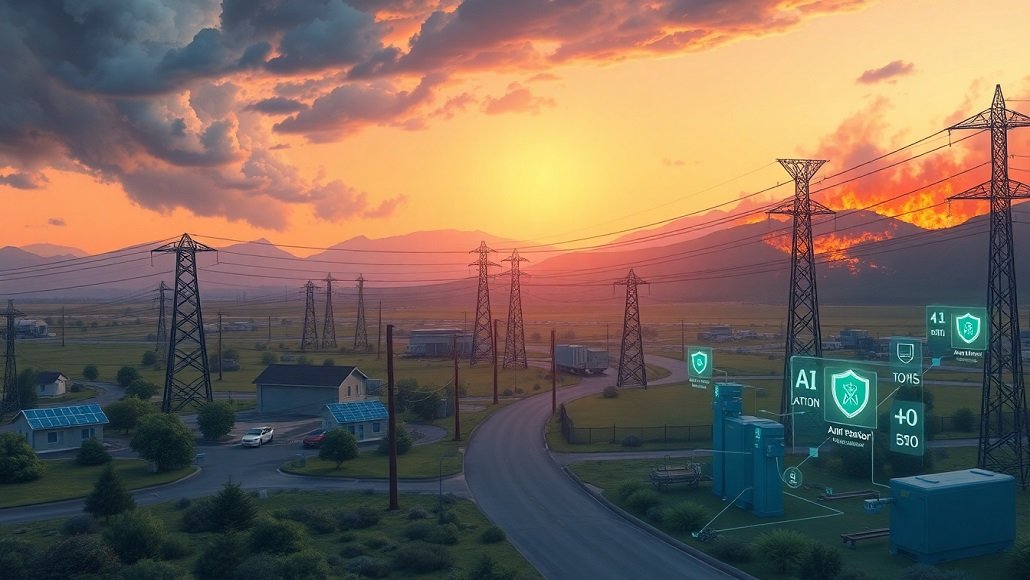Resilience’s new age – going beyond the traditional grid hardening
As the intensity as well as frequency of extreme weather events continues to grow, grid resilience is no longer only just about steel poles or reinforced substations. The evolving threat spectrum from wildfires and hurricanes to cyber threats, along with sudden demand rises, asks for more than just a mere traditional fortification. The point here is that the path forward is very clear – smarter and more adaptive technology that is not just resistant to failure but also expects and adapts to the conditions that are changing really fast, and that too in real time.
It is well to be noted that grid hardening has centered around physical reinforcement – upgradation transformers, underground lines, or rolling out fire-resistant materials.
Although such kind of measures are very essential, they are no longer sufficient by themselves. The fact is that for truly future-proof the grid, one must not just endure stress but also evolve with it. This is where smart technology comes in, not just to replace physical upgrades but also to elevate their efficiency and efficacy as well as create a grid that is intelligent and robust.
How come strength alone is no longer enough?
Traditional reinforcement’s cost burden
Hardening of the grid by way of physical means is often capital intensive and also slow to roll out. Underground power lines, for instance, happen to be among the most expensive approaches, and while they are effective against storms, they do very little to address threats such as anticipated peak loads or cyberattacks. In areas that are wildfire-prone, utilities happen to be investing heavily when it comes to fire-resistant poles as well as advanced vegetation management. But these physical reinforcements happen to offer very little flexibility and cannot adapt dynamically when it comes to load shifting, generation patterns, or even real-time threats. The fixed nature of traditional hardening methods goes on to leave utilities with high expenditure and infrastructure that has low agility in an environment that is growingly unpredictable.
The limitation of steel along with climate pressure
Growing volatile climate patterns are indeed pushing infrastructure beyond its stress points. Storms are becoming more intense, there are droughts that are longer, and the severity of extreme temperatures is well known. Designing grids in order to withstand such worst-case scenarios needs a tremendous amount of higher investments if done only by way of grid hardening. This is indeed a very diminishing returns game – the more you try to protect it, the more costly each incremental gain becomes.
Apparently, smarter systems go on to offer an alternative – rather than going ahead to build invulnerability within every pole as well as line, utilities can roll out adaptive systems that happen to respond dynamically to these kinds of threats.
A system that can go on to isolate a fault within milliseconds, self-heal with the distributed energy assets, or even reroute the power does not require being impenetrable, but it has to be intelligent.
The tools for future resilience when it comes to smarter grid technologies
Distributed intelligence – pushing those decisions to the edge
When it comes to smarter grids, decision-making does not completely depend on the whims and fancies of the local command centers. Interestingly, edge-based computing along with distributed intelligence enables the local devices, such as recliners, sensors, or even distributed energy sources, to evaluate, act, and communicate, and that too in real time. The systems go on to detect certain abnormalities, automatically go ahead and isolate any sort of fault, and even reroute the power with bare minimum human intervention.
This is especially very important in the case of rural or even remote locations where the time to respond can make a lot of difference between minor disturbances or a major outage. It is well to be noted that distributed intelligence also decreases any kind of suspension, helps in growing dependability, and also enhances situational awareness throughout the entire network.
Situation awareness by way of grid analytics
It is worth noting that smarter grid platforms are majorly dependent on real-time analytics. Utilities can now go ahead and roll out thousands of sensors as well as meters that feed the data within cloud-based systems, which are capable of predictive modeling as well as functional forecasting. These kind of models happen to integrate load behavior, environmental data, and historical performance in order to flag any kinds of risks that are emerging, often before customers even experience any sort of service degradation. The fact is that analytics are not just about preventing any kind of outages, but they also help the operators to optimize their load flows, enhance the energy efficiency, and also manage voltage levels during the course of normal operations. This dual-use advantage, both in case of crisis and routine performance, makes the smart grid investment an economically viable option even in conditions of stability.
Fault detection, which is automated as well as self-healing
Apparently, smarter grids make use of automated fault location, service restoration, and isolation in order to drastically decrease any kind of outage durations. These systems go on to sense any faults, gauge the location of the problem, and also reroute power flows, and that too within seconds. All this minimizes the downtime and also safeguards cascading failures in the network. In zones that are wildfire-prone, this kind of automation is very critical. When a power line gets compromised, the capacity to shut it off within seconds can prevent a catastrophic ignition. Moreover, smart switches as well as recliners can go ahead and energize zones in a preemptive way by enabling utilities to safeguard communities. And not affect the entire region.
DER management, which is integrated
The multiplication of distributed energy resources (DERs) like rooftop solar, battery storage, and electric vehicles happens to add both intricacy and opportunity to the modern grid. Smart grids can go ahead and coordinate these kinds of diverse inputs in real time and make use of them in order to support resilience objectives. For example, a network Having residential batteries can get orchestrated as a virtual power plant (VPP) by delivering demand response during the peak load or backing up vulnerable segments when it comes to the grid during events of disasters. Smarter grid orchestration platforms happen to manage this coordination in a very seamless way by helping utilities to treat thousands of individual DEEs as one flexible asset.
Key Differences Between Traditional Grid Hardening and Smart Grid Approaches
| Feature | Traditional Hardening | Smart Grid Enhancement |
| Focus | Physical strength (steel poles, underground cables) | Intelligence and flexibility |
| Response Time | Minutes to hours | Sub-second (automated) |
| Adaptability | Static and reactive | Dynamic and predictive |
| Investment Model | High upfront CapEx | Scalable OpEx/CapEx blend |
| Disaster Recovery | Manual restoration | Self-healing mechanisms |
| Integration with DERs | Limited | Full, real-time orchestration |
Cyber security – an invisible threat that requires smart defense
It is well to be noted that physical threats are visible and tangible, but when it comes to cybersecurity, it has become one of the most pressing modern concerns for grids. As the utilities digitize their systems and embrace internet of things technologies, their cyber risk exposure increases. The fact is that a smart grid happens to be only as robust as its digital perimeter.
Apparently, leading utilities now execute layered defense strategies like anomaly detection at the edge, threat analysis, encrypted data communications, and simulated breach deals. Rather than depending only on firewalls, smart grid cybersecurity stresses continuous tracking and real-time response along with learning from every attempt, even if it is successful or not. This kind of emphasis on smart protection, which goes beyond traditional perimeter-based defense, happens to reflect a much broader truth: within a digital world, intelligence is indeed resilience.
Regulatory as well as economic drivers for a smarter grid
Governments, along with regulatory bodies, are no longer satisfied with minimum dependability standards. Throughout North America, Asia, and Europe, regulations keep evolving in order to promote grid modernization, community resilience, and carbon reduction. This happens to create a robust financial incentive when it comes to utilities in order to invest in smarter infrastructure, specifically where the recovery rate models happen to support innovation. Utilities, which are investor-owned, are also witnessing shareholder pressure in order to minimize any kind of wildfire risk, align along with environmental, social, and governance (ESG) yardsticks, and decrease outages within minutes. This kind of shift towards smarter technologies is not just a technical requirement, but it is also becoming an economic necessity.
Going ahead and preparing for the next decade
The next seven years are going to determine if utilities are going to be reactive or proactive. Cybersecurity threats, along with climate risks as well as DER penetration, are not future concerns but the challenges of today. When it comes to utility, it is still focused on physical grid hardening and building strength from the past and not the future. Smarter technologies like distributed edge intelligence, AI-based management, and VPP orchestration, along with self-healing systems, go on to offer the capacity to scale resilience without any kind of scale in costs in a linear way. Utilities that can’t embrace these capacities help position themselves to serve their communities in a more sustainable, reliable, and profitable way, regardless of what the future brings.
Technology Priorities for Grid Modernization (2025–2032)

In the end- resilience by way of intelligence and not just reinforcement
It is well to be noted that the traditional model when it comes to grid hardening focused mainly on physical strength. However, in a world where there is growing complexity, distributed energy, and also dependence on digital, smartness is indeed the new resilience.
As the demands when it comes to power grids multiply, the solution is no longer to just make them stronger, but it is about making them smarter.
Strength without any kind of foresight is indeed brittle. By way of embedding intelligence throughout every layer of the grid, right from sensors to substations and even control centers, utilities can go ahead and build systems that are adaptive, well aware, and even safe. The systems can withstand any kind of cyberattack, storm, or even supply shock, not by force, but by coordinated and informed response.
The fact is that to future-proof the grid, it will not be only about robust poles or thicker wires, but by how well the systems can evolve, learn, and safeguard themselves as well as their uses by way of power of technology. The grid which can go ahead and sense, evaluate, respond, and even recover within seconds in any kind of threat situation is a grid which is built, not just for survival, but also for leadership. The age when it comes to smart grid modernisation has arrived. Now the question is no longer, if the utilities should go ahead and adopt these smart technologies, but how quickly they can adopt to them.
References
- 2024–2025 Grid Modernization Strategy Reports (various utilities and NARUC summaries)
- IEEE Smart Grid Initiatives and DER Integration Research (2024)
- EPRI Resilience and Cybersecurity White Papers (2024)
- Industry case studies from utilities in wildfire-prone regions of California, Australia, and Southern Europe
- Utility investment trend reports and technology roadmaps through 2032





